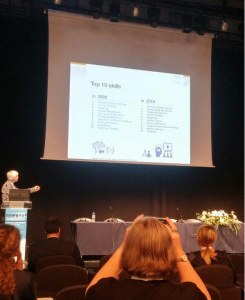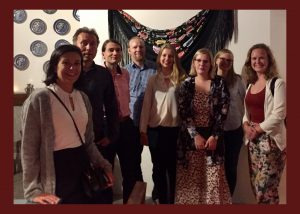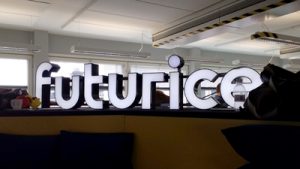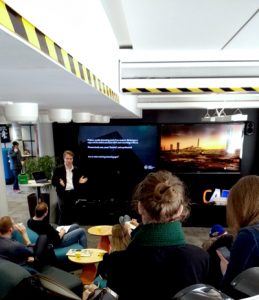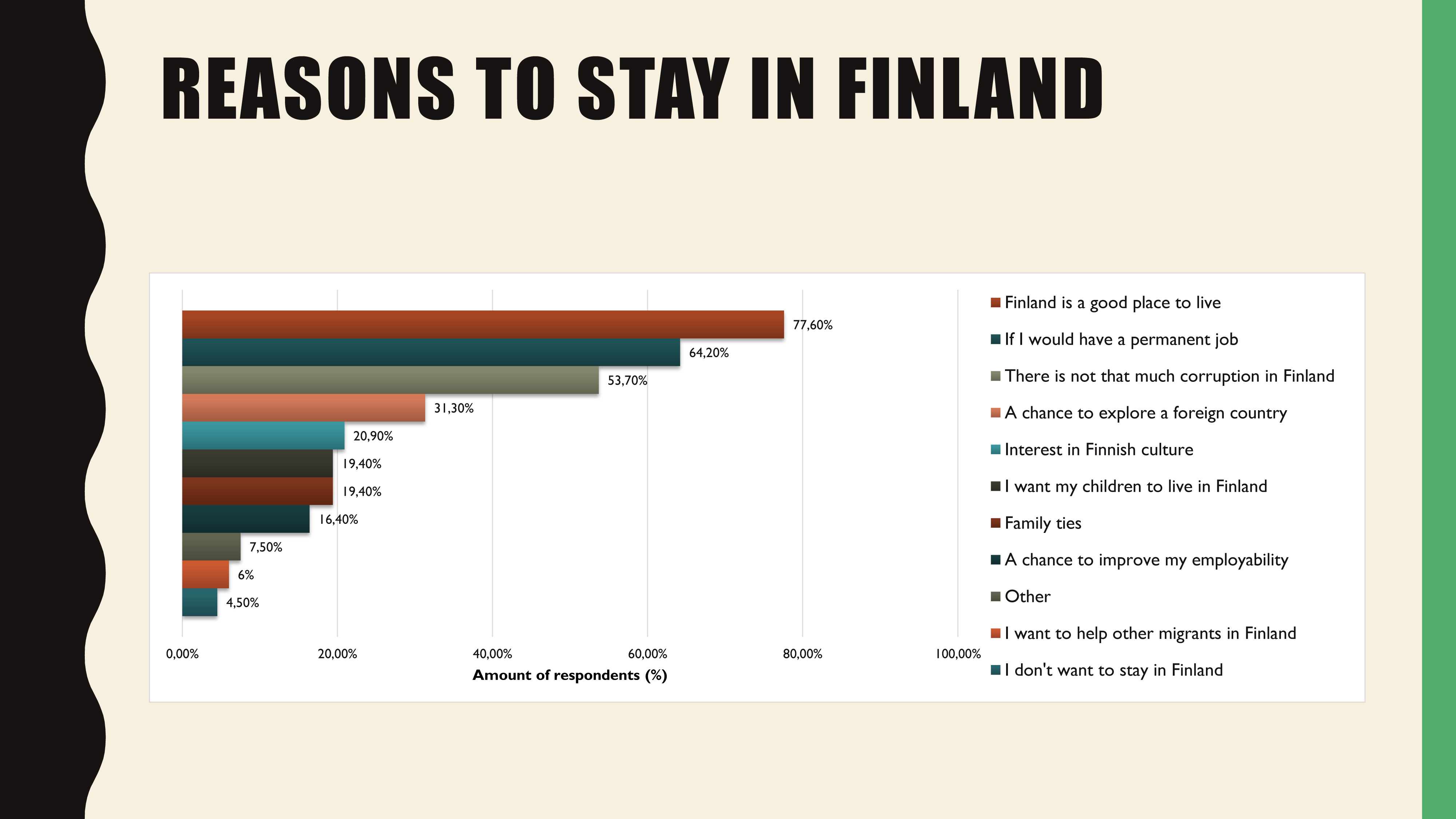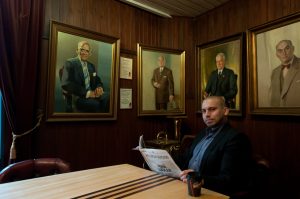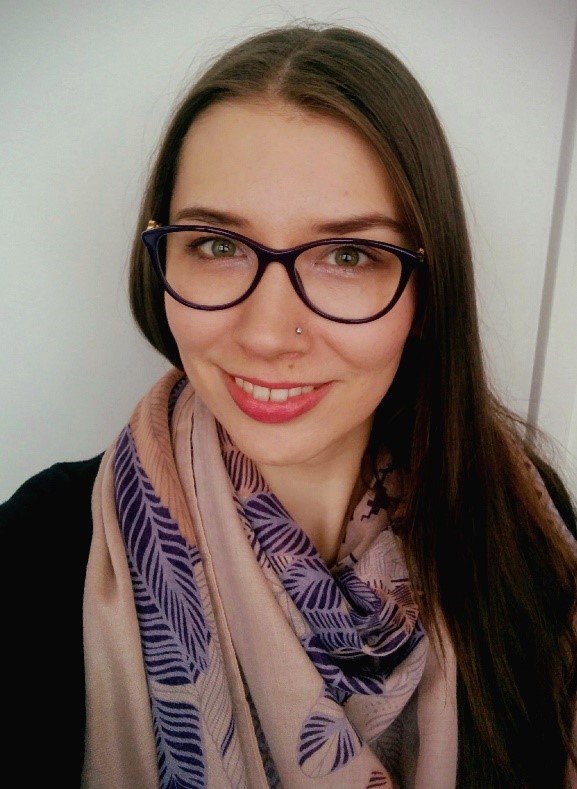Mitä teet ensi vuonna?
Tämä kysymys on pulpahdellut vastaan viime aikoina kaikkialla – kiltahuoneilla, ruokaloissa, AYY:n toimiston käytävillä, vuosijuhlien silliksillä, vuoden viimeisissä kehityskeskusteluissa… Näin joulukuussa, kun viimeisimmistäkin tapahtumista alkaa olla aikaa ja pahimmankin gonahduksen pikkuhiljaa korvaa nostalgia, on helppoa unohtaa kuluneen vuoden epätoivon ja väsymyksen hetket ja alkaa innostua taas jostain ihan uudesta. Itse olen koko vuoden harjoitellut ponnekkaasti omaa vastaustani tähän kuuluisaan kysymykseen: “En mitään. Aion valmistua.” Toki olen harjoittanut tätä vastausta jo kaksi edellistäkin syksyä kohtuullisen huonolla menestyksellä, mutta ei puhuta nyt siitä. Lähes kuuden vuoden opiskelun ja aktiivisen vapaaehtoisnakkeilun jälkeen on hyvä hetki pohtia, minkä ihmeen takia sitä oikeastaan on kerta toisensa jälkeen päätynyt käyttämään välillä huomattaviakin määriä vapaa-aikaansa työhön, josta ei saa palkaksi kuin kiitosta (toisinaan) ja hyvän mielen (ainakin kun tapahtuma on turvallisesti takanapäin). Loppujen lopuksi vastaus on hyvin yksinkertainen:
Vapaaehtoistyössä pääsee ylittämään itsensä perusteellisemmin kuin missään muualla
Kuutisen vuotta sitten kirkassilmäisenä mursuna päätin, että johonkin on lähdettävä mukaan, jos ei muuten niin siksi, että sillä tavalla tulisin puolivahingossa pakottaneeni itseni lähtemään myös mukavuusalueeni ulkopuolelle. Jos olisin mursuna aavistanut, miten pitkälle silloiselta mukavuusalueelta tulisin erinäköisten nakkieni myötä vaeltaneeksi ja miten paljon lisää rohkeutta ja itsevarmuutta erinäköisissä tehtävissä onnistumisista (ja epäonnistumisista) saisin, olisin luultavasti tehnyt saman päätöksen vielä vähän ponnekkaammin.
Ironista kyllä, omalla kohdallani suurimmat onnistumisen kokemukset olen löytänyt nakeista, joihin en koskaan olisi uskonut päätyväni. Ennen kaikkea nämä ovat kaksi vuottani yhteisöjaosto Aavassa. Syksyllä 2014, viiden eri vapaaehtoistoimen jälkeen, päätin vakaasti, että nyt riitti, ei enää. Vaadittiin silloin AYY:n hallituksessa istuneen ystäväni kaikki suostuttelutaidot ennen kuin taivuin lähettämään elämäni surkeimmin kirjoitetun hakemuksen, ja vielä haastattelussa yritin kaikin tavoin tuhota mahdollisuuteni päästä mukaan. Jostain käsittämättömästä syystä puheenjohtajamme kuitenkin näki niskoitteluni lävitse, ja otti minut mukaan porukkaan ja vuoteen, josta tuli ylivoimaisesti siihenastisen vapaaehtoisurani huikein kokemus (tästä suuri kiitos sekä minut hakemaan painostaneelle että minut valinneelle, tiedätte keitä olette <3).
Se määrä vuonna 2015 tapahtuneita asioita, joita en olisi ikinä uskonut tapahtuvaksi. Kun päätimme kymmenen ihmisen voimin järjestää ensimmäistä kertaa ihkaoman wapunaloitusfestarin koko Aallolle, ja siivosimme saman kymmenen ihmisen voimin sitä aamukolmeen. Kun keksimme täysin randomisti, että ennen lakitusta Mantan lakki voisi kierrellä opiskeljatapahtumia ja käydä tapaamassa tärkeitä ihmisiä, ja tästä kampajasta paisui valtamedioissa asti huomioitu #matkallamantalle. Kun tästä palkinnoksi pääsimme wappunaattona pesemään Mantan. Kun lähdin puolivillaisesti mukaan tekemään KY:n Otaniemeen saapumisshow’ta KY-Entryä ja huomasin olevani järjestämässä tapahtumaa, joka sisälsi kuorma-autokulkueen, laivan, kävelykulkueen, helikopterin ja aivan huikean lavashown ja bileet. Kun olin ensimmäistä kertaa yksin vastuussa tapahtumasta, jonka idean olin vielä itse keksinyt, ja se onnistui yli kaikkien odotusten.
Kun päätin, että minusta voisi ehkä sittenkin joskus tulla jonkin vapaaehtoisporukan puheenjohtaja
Siihen asti olin aina ajatellut, että en minä, ei minusta ole siihen, parempi jättää johtaminen niille, jotka sen oikeasti osaavat. Alkusyksystä 2015 sain päähäni, että ehkäpä minä sittenkin, jollain tavalla, ihan vähäsen, pystyisin puheenjohtamaan seuraavaa Aavaa – ja tästä ajatuksesta en enää päässyt irti, vaikka ponnekkaasti yritin. Lopulta, viimeisenä hakuiltana, löysin itseni samasta tilanteesta kuin vuotta aikaisemmin, lähettämästä sekavaa ja huonosti kirjoitettua hakemusta virkaan, josta en ollut ihan varma, halusinko sitä. Haastattelun jälkeen luulin olevani selvillä vesillä – ei kukaan täysjärkinen meikäläistä tuon jälkeen valitse – mutta toisena syksynä peräkkäin sain yllättyä. Ensireaktioni, kun hallituksen kulttuurivastaava soitti ja kertoi valinnastaan, oli muistaakseni erinäköisillä luovilla kirosanoilla maustettu versio lauseesta “et voi olla tosissasi”(joka sivumennen sanoen kirvoitti puhelimen toisesta päästä hilpeää naurua). Ei varmaan tarvitse sanoa, että toista kertaa peräkkäin puolivillaisesti viime tipassa tehty päätös osoittautui yhdeksi elämäni parhaimmista.
Looking back, tuntuu hassulta että aika tarkalleen vuosi sitten tähän aikaan olin aivan paniikissa. Ei minusta ole tähän, ei minulla ole aikaa tähän, mistä ihmeestä saan kerättyä Aavaani yhdeksän pätevää tyyppiä, pystynkö muka luomaan porukkaan minkäännäköistä yhteishenkeä, tästä tulee aivan totaalisen hirveää, voinko vielä perua päätökseni ovat vain muutamia päässäni silloin jatkuvasti pyörineistä ajatuksistani. Useampi kuin yksi kaverini rohkaisi minua silloin sanomalla, että muutaman viikon päästä, kun olisin saanut porukan kasaan ja hommat pyörimään, en edes muistaisi näitä ajatuksia – ja oikeassahan he olivat. Heti ensimmäisestä Aavan vuosimallia 2016 hengauksesta alkaen tiesin, että tästä vuodesta tulisi näiden tyyppien kanssa vieläkin huikeampaa kuin viime vuodesta, enkä ole tähän mennessä joutunut tätä ajatusta uudelleenarvioimaan.
Ei sillä, etteikö tämä vuosi olisi monella tapaa ollut suurin ja henkisesti vaativin omalta mukavuusalueelta ulos sukeltaminen, jonka olen opiskeluaikoinani toteuttanut. Olen oppinut luovimaan vastakkaisten mielipiteiden suosta kompromissiratkaisuun astumatta kenenkään varpaille. Olen oppinut korottamaan ääntäni ja vaatimaan huomiota sanottavalleni vaikka kesken lennokkaan läpänheiton (sekä kiipeämään tuolille ja nakittamaan kovempiäänisiä ihmisiä äänitorvikseni, kun jotain pitää ihan oikeasti saada sanottua). Olen oppinut, että joskus puheenjohtajankin kannattaa vain sanoa mielipiteensä suoraan, vaikka se ei miellyttävää kuultavaa olisikaan. Olen oppinut, että muiden tukeminen onnistumisessa voi olla vielä palkitsevampaa kuin onnistuminen itse. Ennen kaikkea olen oppinut sen, että epäluuloistani huolimatta myös minusta on johtamaan ihmisiä – omalla tyylilläni toki, mutta loppujen lopuksi johtamistyylejä on yhtä monta kuin ihmisiä. On ollut hetkiä, jolloin mieli on tehnyt nostaa kädet pystyyn ja sanoa “fuck dis, I quit”. Ja sitten on ollut paljon, paljon enemmän hetkiä, jolloin olen ollut aivan valtavan iloinen, että juuri minä saan puheenjohtajaa juuri tätä porukkaa ja luotsata meitä yhdessä tekemään koko ylioppilaskunnasta kaikille vähän hauskempaa paikkaa.
Parhaan ystäväni sanoin: harvemmin sitä katuu niitä asioita, jotka teki, kuin niitä, jotka jätti tekemättä. Jos siis tuntuu siltä, että mukavuusalue alkaa olla liian mukava paikka, että olisi aika laajentaa reviiriä, että jotain uutta olisi kiva kokeilla, vaikka et ole ihan varma, pystytkö siihen – kokeile. Se voi olla tähänastisen elämäsi paras päätös, ja vaikka ei olisikaan, opit varmasti jotain, mikä olisi muuten jäänyt oppimatta.
Pian valmistuvan vapaaehtoiskonkaritädin terkuin,
Elkku
Ps. Asiaan mitenkään liittymättä, AYY:n vapaaehtoishaut ovat auki vielä muutaman päivän osoitteessa ayy.fi/stop 😉

